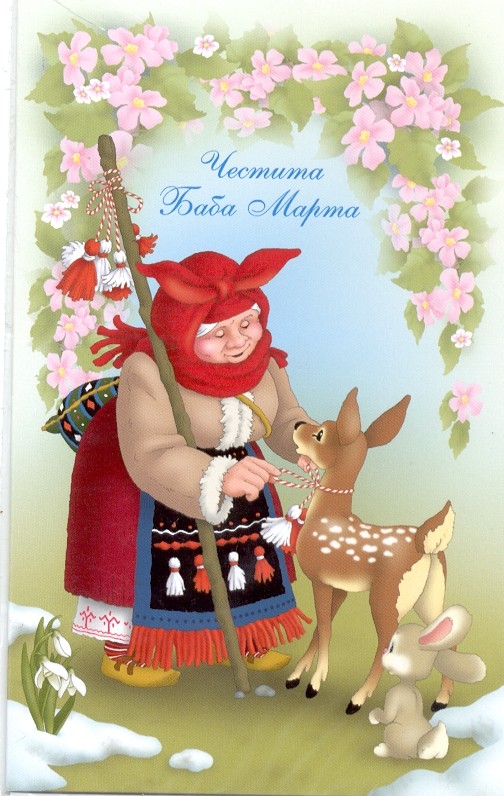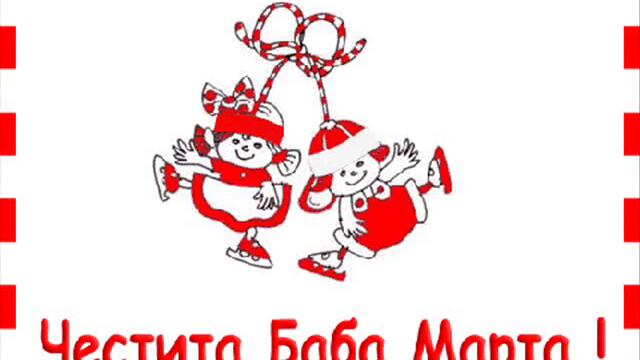
The Romanian holiday Mărțișor is a variant of Baba Marta. It also resembles the German tradition of hanging empty eggs in blossoming trees during the (now Christian) Eastern folklore and the Persian tradition of hanging fruit in trees at midwinter. The Bulgarian tradition resembles folklore known in parts of Asia and South America, to wear a lucky bringing friendship bracelet around the wrist until it wears out. Some people then tie their martenitsa to a tree, others place it under a rock and based on what they find there the next morning guess what kind of a year this one would be. People wear martenitsa for a certain period, the end of which usually is connected with the first signs of spring birds like storks or swallows. Children usually compete who will get the most. The martenitsa comes in all shapes and sizes - from building packages to strings on a newborn's arm. In ancient times women’s wedding dresses were red. Red represents the woman and health: it is a sign of blood, conception and birth.

Later, under the influence of Christian mythology it began to indicate integrity and virginity – white is the color of Christ. The white color first symbolized man, the power light solar zone. In the small villages in the mountains people decorate their houses, kids and domestic animals. They are given away to friends and family and are worn around the wrist or on clothes. Martenitsi are red and white coloured bands or figurines that symbolise health and happiness, a lucky charm against evil spirits. Martenitsi, hung on fruit tree in blossom, Bulgaria.

The beach was named after the Baba Marta. This story can also be found in German folklore, for instance in the "Frau Holle" or Mother Hulda legend.īaba Marta Beach is a beach on the southern coast of Nelson Island, an Island off of Antarctica. One says that on that day she does her pre-spring cleaning and shakes her mattress for the last time before the next winter - all the feathers that come out of it pour on Earth like snow - the last snow of the year. Use them in commercial designs under lifetime, perpetual & worldwide.
#Baba marta celebrate in bg image download
As folklore there are different versions of the Baba Marta tale. Download Chestita Baba Marta stock photos. The tradition of giving friends red-and-white interwoven strings brings health and happiness during the year and is a reminder that spring is near.īaba Marta ("Grandma March") is believed to be a feisty lady who always seems to be grudging at her two brothers, January and February, while the sun only comes out when she smiles.


Together, we crafted over 100 martenitsi, which we gifted to the kids in an orphanage in Roman, Bulgaria.Bulgarians celebrate on March 1 a centuries-old tradition and exchange martenitsi on what is called the day of Baba Marta. In honor of this holiday, I - as the Alumni Coordinator of Bulgaria - decided to create a Martenitsi Workshop on March 18 with the help of ten fellow alumni. All the feathers that fall out of it become the last snow of the year. One says that on March 1, she does her annual spring cleaning and shakes her mattress for the last time in the winter. In Bulgarian folklore, there are a few different versions of the Baba Marta tale. The holiday is celebrated on the first day of March in Bulgaria by giving friends and family red-and-white interwoven strings which bring health and happiness during the year to the people who receive them.īaba March is an old lady who dislikes her two older brothers, January and February. Her holiday, called Baba Marta, translates to Grandma March in English. By Zhanet Velkova (YES 2018-2019, Bulgaria, placed by ACES in Oregon, OH)īaba Marta is a Bulgarian mythical figure believed to bring the end of the freezing winter and the beginning of the warmer spring.


 0 kommentar(er)
0 kommentar(er)
